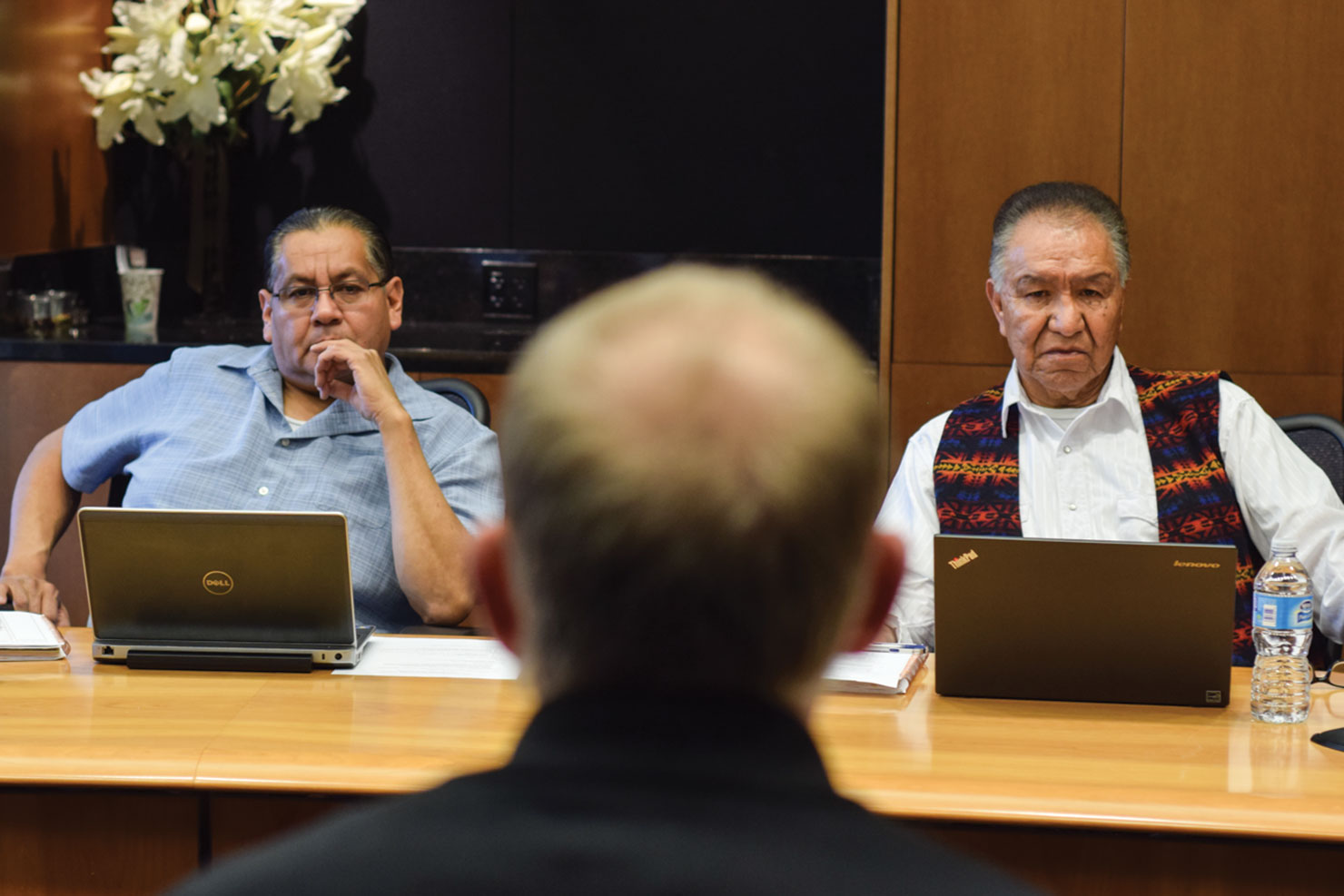The Environmental Protection Agency visited the Southern Ute Indian Tribe Thursday, Jan. 28 to provide updates on the EPA’s response to the Gold King Mine and the upper Animas Superfund Site status.
The informational meeting gave Tribal Council and tribal staff a chance to hear about the water treatment ponds developed at Gladstone and about the process of getting Barker Park (aka Upper Animas) Mining District on the EPA’s National Priorities List.
Knowing that the winter weather would make the Gold King Mine inaccessible the EPA developed a treatment pond down the mountain from the mine, at Gladstone, which is currently treating the water coming from the mine.
Before the weather turned, the EPA was able stabilize part of the mine and has gained access 65ft into the mine, David Ostrander, Director of Emergency Response and Preparedness Program, said.
“Our intention is to find where the water is coming from in the mine. The mine is stable at this point, as spring comes we will continue exploring it,” Ostrander said.
Exploring the mine and finding out where the water is coming from is a necessary task, he said.
“To not have to treat the water forever, that would be a good thing. We’re trying to open lines up to see if we can keep the water from getting acidic, so we don’t have to treat it,” Martin Hestmark said, EPA Region 8 assistant regional administrator said.
Currently, the mine is discharging 500 gallons per minute – 720,000 gallons a day. At the time of the spill four days worth of waste was dispelled at once, Hestmark said.
The EPA also discussed getting the Barker Park Mining District (Upper Animas) on the National Priorities List under Superfund, which would lead to eventual clean up of the area.
In order to be put on the list, the site is first evaluated using the Hazard Ranking System, a screening tool, which scores the relative threat to human health and the environment. The HRS assigns each site a score between 0-100, with scores of 28.5 and above being eligible for the NPL designation.
But getting on the list doesn’t necessarily mean a quick fix.
“It is likely a 20 to 30 year project,” EPA program director, Johanna Miller Assessment and Revitalization Program, said about the mining district.
The good news is that the EPA already has a lot of information about the district, Hestmark said.
“We tried to list the site in 1998. As a matter of practice and policy we want the community to list the site, the community didn’t want to list the site [in 1998],” Hestmark said.
But now, getting the site designated is receiving more support from those who were affected by the spill. Just last Tuesday, Jan. 26. the La Plata County Commission approved a resolution in support of Superfund designation to address cleanup in the Silverton area.
“What role do we play in the Superfund decision and the designation of the site,” Southern Ute Chairman Clement J. Frost asked.
It would be very important to have the tribe’s support to make the site Superfund, Miller said.
Hestmark reiterated the important role the tribe plays in the designation.
“A letter from the Southern Ute Government to Governor John Hickenlooper would be instrumental,” he said.

